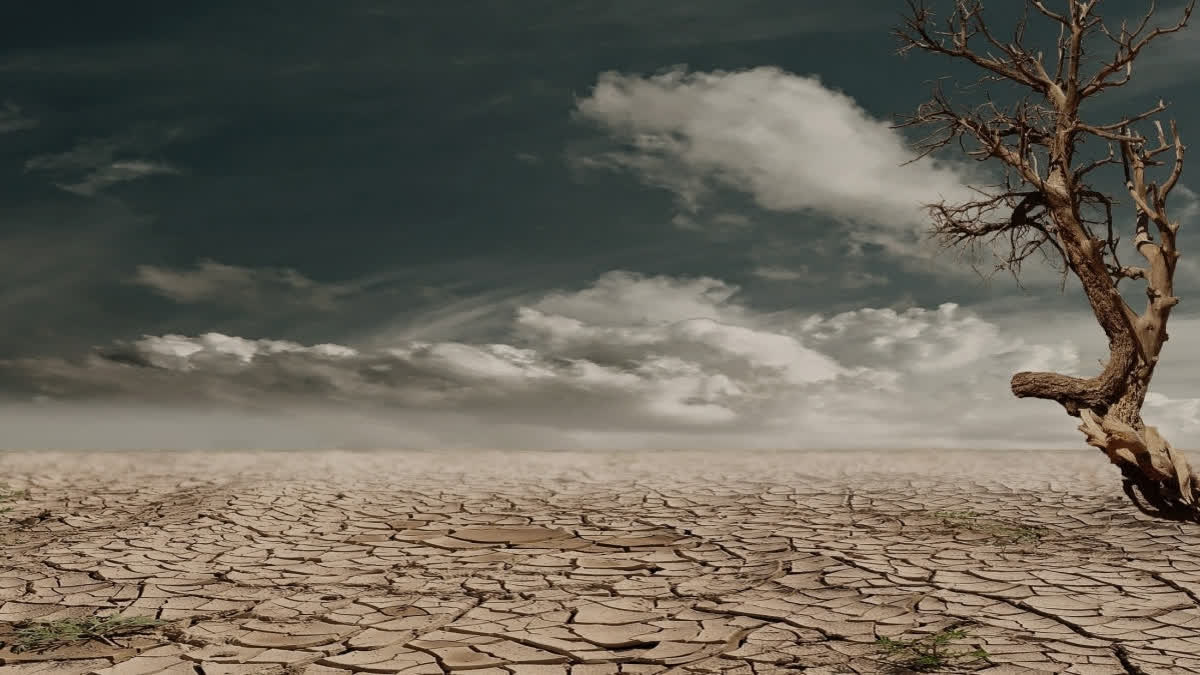New Delhi: With the climate phenomenon called El Nino happening after a gap of eight years and strengthening gradually, world leaders and climate activists, who are going to gather in Dubai in the United Arab Emirates (UAE) on November 30 for COP28 (28th Conference of the Parties of the United Nations Framework Convention on Climate Change), will have their task cut out in meeting the 2015 Paris Agreement target of limiting global temperature rise to 1.5 ºC.
El Nino is a climate phenomenon that occurs in the tropical Pacific Ocean. It is characterised by the periodic warming of sea surface temperatures in the central and eastern equatorial Pacific Ocean, along with changes in atmospheric pressure patterns. El Nino events typically have a significant impact on global weather and climate patterns, including altered rainfall, temperature, and atmospheric circulation patterns.
An article by Andrew King, Senior Lecturer in Climate Science at the University of Melbourne, published in The Conversation earlier this month cites the September global temperature anomaly of 1.7oC above pre-industrial levels, which is as much as 1.5 ºC above the previous record, as an example.
According to King, one reason for the exceptional heat is that the world is in a significant El Nino that is still strengthening.
“Taking into account the fact we’ve just come out of a triple La Nina, which cools global average temperatures slightly, and the fact this is the first major El Nino in eight years, it’s not too surprising we’re seeing unusually high temperatures at the moment,” writes King.
La Nina is a climate phenomenon that is the opposite phase of the El Nino. While El Nino is characterised by the warming of sea surface temperatures in the central and eastern equatorial Pacific Ocean, La Nina is characterised by the cooling of sea surface temperatures in the same region. La Nina events have their own set of distinct effects on global weather and climate patterns.
At the COP21 held in Paris in 2015, the world agreed to limit global warming to 1.5 ºC compared to pre-industrial levels by 2050. Global warming is the long-term warming of the planet’s overall temperature. Though this warming trend has been going on for a long time, its pace has significantly increased in the last hundred years due to the burning of fossil fuels. As the human population has increased, so has the volume of fossil fuels burned.
“The challenge we face is immense,” incoming COP28 president Sultan Al Jaber was quoted as saying earlier this month.
According to Roxy Mathew Koll, a Climate Scientist at the Indian Institute of Tropical Meteorology, preliminary records have shown that the world has already crossed 1.5oC for a few days this year.
“Global warming is at a fast rate as emissions continue unabated,” Koll told ETV Bharat. “Along with that, we have a mature El Nino in place, which acts as a mechanism to transfer the heat from the ocean to the atmosphere across the globe. This adds to the global average temperatures. Since the El Nino will peak in December and continue to the next year, we might see more of these record-breaking temperatures.”
Koll explained that El Nino is a regular phenomenon characterised by anomalously warm waters in the Pacific. This occurs as an oscillation between warm and cool waters in the central-east Pacific, once every five to seven years. The cool-water phase is La Nina.
“Since oceans absorb more than 93 percent of the additional heat from global warming, when an El Nino occurs, the absorbed heat from the ocean also gets distributed in the climate system,” he said. “Due to climate change, El Ninos are now becoming stronger, and hence their influence also. The frequency of El Ninos still remains the same – they appear every five to seven years.”
Meanwhile, Koll explained, La Nina, the cool water events in the Pacific, prevents the exchange of heat from the ocean to the atmosphere. “Despite this, we still witnessed high-temperature records in 2023 as the La Nina event was unable to mask the high global surface temperatures,” he added.
Meanwhile, interdisciplinary research from Penn State College of Health and Human Development, Purdue University College of Sciences and Purdue Institute for a Sustainable Future, has found that climate change by the turn of the century could lead to global warming that could trigger heart attacks and heat strokes in some of the most populated areas of the world. It indicates that if global temperatures increase by 2oC above pre-industrial levels, 2.2 billion residents of Pakistan and India’s Indus River Valley, one billion people in eastern China and 800 million people in sub-Saharan Africa will experience hours of heat that surpass human tolerance.
“Climate projections show that these heat waves are going to increase further in frequency and intensity over India and Pakistan,” said Koll. “Heat waves affect work productivity by reducing performance and increasing heat-related illness. A decline of 30–40 percent in work performance is projected over India by the end of the century due to the elevated heat stress levels.”
All this indicates that a huge challenge awaits world leaders and climate activists when they congregate for COP28 in Dubai next month to discuss and devise ways to limit global temperature rise and meet the target of the 2015 Paris Agreement.



